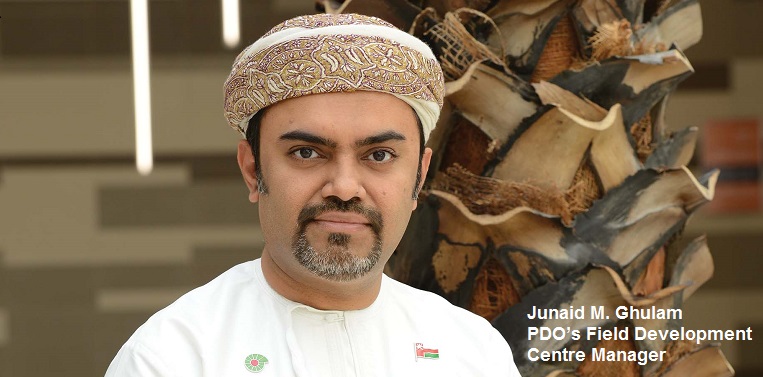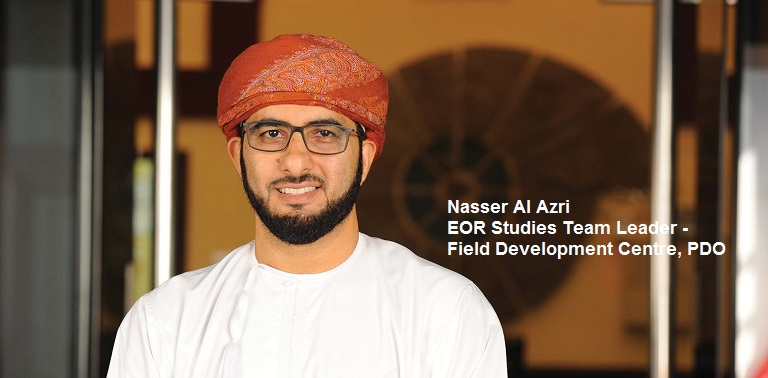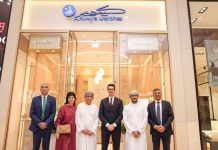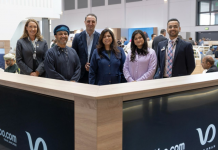Despite the lower oil price environment, Petroleum Development Oman (PDO) is ‘staying the course’ on its game-changing Enhanced Oil Recovery (EOR) journey and working aggressively towards EOR contributing strongly to total oil production in the near future. That is the clear message from Junaid M. Ghulam, PDO’s Field Development Centre Manager and Nasser Al Azri, EOR Studies Team Leader at the Field Development Centre, in a conversation with Akshay Bhatnagar. Excerpts of the conversation:
What are the focus areas of the Field Development Centre and how is it connected to EOR?
Junaid: The Field Development Centre was previously called the Study Centre but we have recently rebranded it. The previous name perhaps portrayed us as more of an academic-oriented centre. The new identity makes us more aligned with the business, getting more focused on business delivery while still retaining the depth of our technical capabilities and expertise. Inspired by PDO vision, our centre’s own vision is to leverage our collective talents to enable 50kboe/d over the next five years and develop additional two billion barrels over the next ten years. Within the Field Development Centre, we have a portfolio and capabilities based structure. So we have four main portfolios:
1 Improved Hydrocarbon Recovery, which is further sub-divided into North and South.
2 Contaminated Hydrocarbons
3 Gas
4 Enhanced Oil Recovery (EOR)
Talking specifically of the EOR stream, we have further sub-divisions – thermal and chemical. The third EOR application, miscible gas, is currently under the Contaminated Hydrocarbon portfolio because incidentally all our miscible gas is under the sour domain.
The way it works logically is, when fields come in, we look at the primary development first followed by infill; then we look at supplementing energy, which we call secondary recovery, say through water flooding or gas injection. Then we move into enhanced oil recovery. So the EOR teams are looking at brown fields that have gone through one or two cycles of development previously. We design the pilots for EOR, provide all the support required. The pilots are executed by the clusters from an operations point of view. Results are fed to us for analysis and, based on that, we recommend smart field development plans.
Can you take us through PDO’s EOR journey?
Nasser: PDO’s EOR journey started in the 1980s with a polymer flooding pilot project in Marmul field. We also tried a steam injection pilot during that same period. These efforts were directed towards extracting the oil which is heavy and viscous. The results were encouraging but due to the lower oil price environment at that time we could not take them to the full field development phase. However, the processes and leanings were captured and well documented.
With a more conducive environment in place and a focus on increasing our declining production, we went back to EOR during 2005-2006 and started working towards a field development plan for injecting polymer in Marmul. Consequently, the first field scale EOR development within PDO took off in early 2010.
The success in Marmul has been followed by field developments including steam injection in the Qarn Alam and Amal fields, and miscible gas injection in Harweel. In addition, there have been over a dozen EOR pilots at different phases of execution within PDO. The Company is aiming to maintain a sustainable long-term oil production plateau of 600,000 barrels a day by 2019 and EOR is expected to contribute strongly to this.
Let’s talk in detail about each of the four EOR field development projects. To start with, EOR at Marmul is completing six years of operations. Has it performed as per the expectations?
Nasser: Marmul has been under water injection since the early 1990s. With water injection, the recovery factor was around 28 per cent. Implementation of the polymer injection will lead to the recovery factor going beyond 35 per cent. The phase 1 development of polymer flooding started in early 2010, where polymer was injected into 27 injectors. The second phase started in 2015 with the addition of 19 polymer injectors. The phase 3 is currently in the Front End Engineering Design stage. The phase 1 led to an increase in oil production of 6,000 barrels a day. As a result, the field went back to producing at the high rate it had achieved during the early years of its production.







